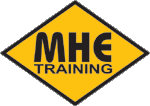A summary of the main changes relating to lifting equipment arising out of The Provision and Use of Work Equipment Regulations 1998, SI No 2306 and The Lifting Operations and Lifting Equipment regulations 1998, SI No 2307 which came into force on 5th December 1998.
Overview PUWER98 and LOLER are two sets of a new generation of Regulations arising from European Directives. These two sets of Regulations together with four approved codes of practice (ACoPs) implement the amendment to the Use of Work Equipment Directive (AUWED). The ACoPs cover PUWER98, LOLER, Power Presses and Woodworking Equipment. PUWER98 applies to all equipment provided for use at work and LOLER is additional for lifting equipment. Therefore for lifting equipment, both must be complied with. They repeal or revoke most of the existing legislation relating to lifting equipment and PUWER98 replaces the 1992 version of PUWER. In addition the opportunity has been taken to repeal or replace several old and redundant Acts, orders and Regulations. Both sets of Regulations show where they apply and list the legislation they repeal or revoke. We suggest you start by reading those to put the new Regulations into the correct context of your own business. (For PUWER98 see Regulations 3, 38, 39 and Schedule 4) (For LOLER see Regulations 3, 13, 14, 15, 16, 17 and Schedule 2) The new Regulations, as for others arising from Europe, are ‘risk based’ and ‘goal setting’ in the way they are written. Generally they apply across all industries, unlike the older industry specific legislation, and also cover some areas not previously covered by legislation. However because we have had the Health and Safety at Work etc Act (HASWA) since 1974, the UK should be well prepared to implement them.
The main changes arising from PUWER98 The main requirements of PUWER98 are to ensure that work equipment is suitable for its purpose, is maintained, is inspected when appropriate to ensure it has been correctly installed and remains in serviceable condition, that the people who use the equipment have been trained and have the information and instructions they need and that appropriate records are kept. In general these are all sensible requirements and PUWER98 to a very large extent simply reinforces the existing requirements of HASWA. PUWER98 also requires the employer providing equipment for use at work to address specific hazards where they exist in much the same way as the Machinery Directive* requires machinery manufacturers to address those risks and hazards. (*Implemented in the UK by The Supply of Machinery (Safety) Regulations 1992, SI No 3073 and amended in 1994) One difference is that the Machinery Directive only applies to new equipment manufactured after a certain date, whereas PUWER98 applies to equipment from all dates of manufacture and supply. Therefore many of the requirements may already have been addressed by the equipment manufacturer, particularly where the equipment complies with the European Directives relating to its manufacture and supply. In some cases upgrading of the equipment or installation will be required and in others the equipment may have to be scrapped. The only way to determine what, if anything, is required is to make a risk assessment for each piece of equipment. Regulation 10 requires equipment first provided for use after 31st December 1992 to comply with any ‘essential requirements’ i.e. the requirements in the legislation dealing with the manufacture and supply of new equipment such as the Machinery Directive. However sometimes equipment complying with these requirements may still present a hazard or risk that is unacceptable and, in effect, the new equipment cannot be used until further steps are taken. This could be, for example, because the equipment is used in an application different from that originally envisaged or provided for by the manufacturer or because some aspect of safety depends upon the way it is installed. It may also arise from a technical mismatch between the supply side and user side legislation. This has occurred with some mobile equipment dealt with under regulations 25 to 30. One important point to consider is how the employer ensures that the equipment he provides complies with the relevant instruments. The most obvious for lifting equipment which should comply with the Machinery Directive is to look for the CE marking and obtain the EC declaration of conformity. From the user’s point of view, it is therefore very important that manufacturers properly affix the CE marking and issue the correct documentation including the information for use and that suppliers pass on all the correct documentation.
The main changes arising from LOLER Compared to older specific legislation, the main changes related to lifting equipment are: The definition of lifting equipment is much more open and now includes some equipment which may not have previously been regarded as such. (See LOLER Regulation 2)
There are additional requirements for lifting persons. (See LOLER Regulation 5)
There are additional requirements for making equipment which is designed for lifting persons or is not designed for lifting persons but might be so used in error. (See LOLER Regulation 7)
There is greater emphasis on planning the lifting operation. (See LOLER Regulation 8)
The requirements for testing, thorough examination and inspection are more flexible, allowing an examination scheme as an alternative to fixed maximum periods between thorough examinations. (See LOLER Regulation 9)
If lifting equipment leaves an undertaking or is obtained from another undertaking it must be accompanied by physical evidence that the last thorough examination required has been carried out. (See LOLER Regulation 9) There are different requirements for reporting and records. (See LOLER Regulation 10 and Schedule 1)
Generally the other requirements of LOLER are similar to the older legislation although the detail varies a little.

